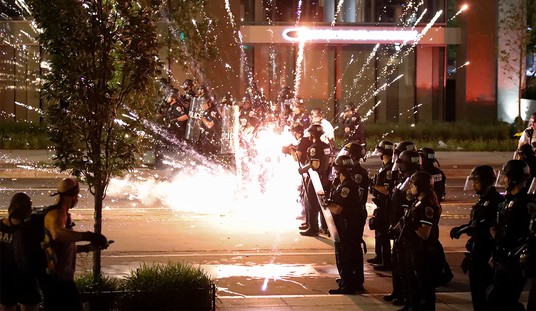A fair portion of the credit for Donald Trump’s 2016 victory has been given to coal country voters who were no doubt disillusioned with some of the comments previously made by both Barack Obama and Hillary Clinton. Trump pitched the value of coal country jobs and promised to work to bring them back. We can probably expect a rerun of this phenomenon in 2020, but is there another block of energy voters who are being overlooked?
That’s the argument being made this week by Liz Mair in an editorial for The Hill. We shouldn’t be discounting or abandoning coal country, but there are plenty of voters in similarly Trump-friendly districts who live near or work at nuclear power plants. The similarities between the two groups are notable.
There’s been de facto radio silence regarding nuclear power in the presidential campaign realm since 2008, when McCain talked about it in the context of his energy and climate plans, and when Obama was running as a senator from Illinois, where a lot of energy is generated by nuclear (and, yes, coal).
The truth, though, is that for all the focus on “coal voters,” “nuclear voters” may be a pretty key constituency, too — or at least they were in 2016. Understanding that helps one understand why some people in the administration, and the president himself, see support for nuclear power as politically important, as well as valuable in terms of things like grid resiliency and the ability of power plants to function in or withstand things like majorly destructive hurricanes.
Across America, there are nuclear reactors in 63 counties. Trump won 50 of those counties in the 2016 primary and 48 in the general election.
In general, nuclear power plants are found in red states and blue collar communities, i.e., the kinds of places that Trump’s stereotypical base lives. Nuclear power plants also employ a lot of folks who don’t have lots of letters behind their names and voluminous degrees, but who tend to get paid pretty well and want to keep it that way. That sounds exactly like a lot of Trump voters, right? That’s because in the main, a lot of them likely were.
First, it’s worth asking why so many of the nuclear reactors are in Trump country. It’s because they tend to be in more rural areas, well away from the major population centers. Those tend to be the more red districts to begin with. But Mair makes a good point in stating that we don’t talk about nuclear power on the campaign trail to speak of. That’s something of a mystery, considering how much energy we still draw from nuclear plants The nation’s 99 operational plants contributed roughly 20% of all of America’s electricity last year, a figure which has remained steady for decades.
Unfortunately, we are shutting down nuclear plants without approving the construction of any new ones. Seven plants have shut down since 2012 and more are scheduled to close. A senior official with Exelon, one of the largest nuclear plant operators in the country, said in April that he doesn’t believe that they will ever build another plant in the United States. Regulatory and security costs are simply too high and the political will doesn’t exist to make it any easier in the future.
The plants we have now will continue to operate for a few decades more, but after that we’ll be stuck looking for something to replace them. Wind and Solar don’t have that kind of capacity, so it’s unclear where we turn next. But for now, there are still a large number of counties where energy-friendly candidates could score some points by standing up for the remaining plants we do have.








Join the conversation as a VIP Member